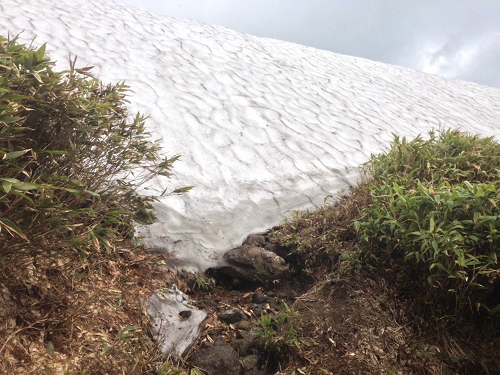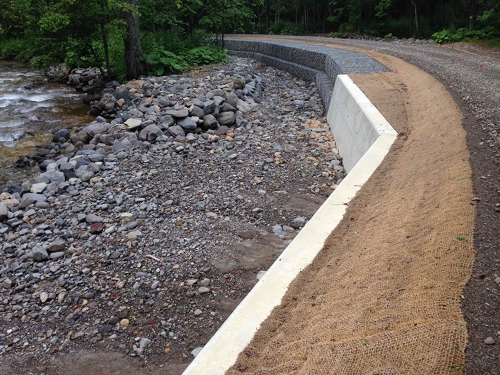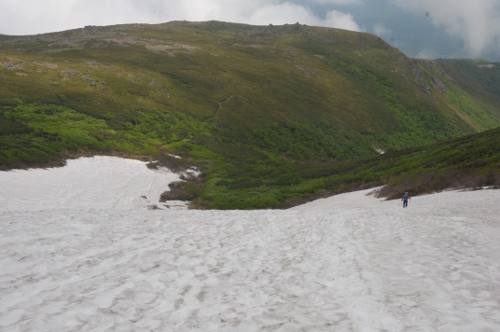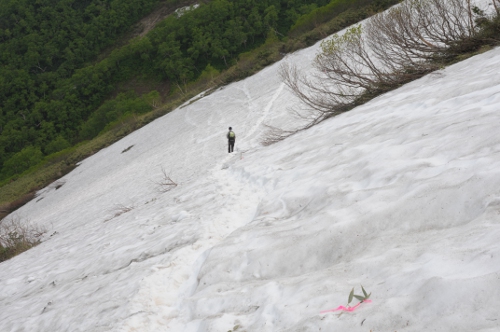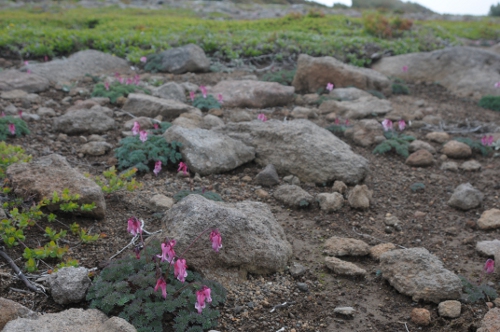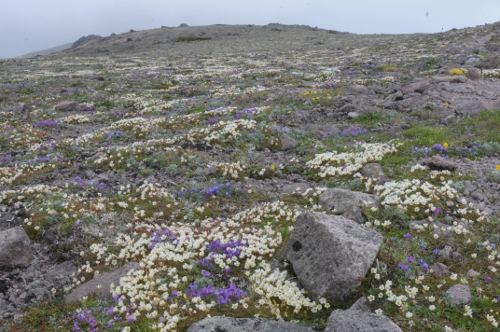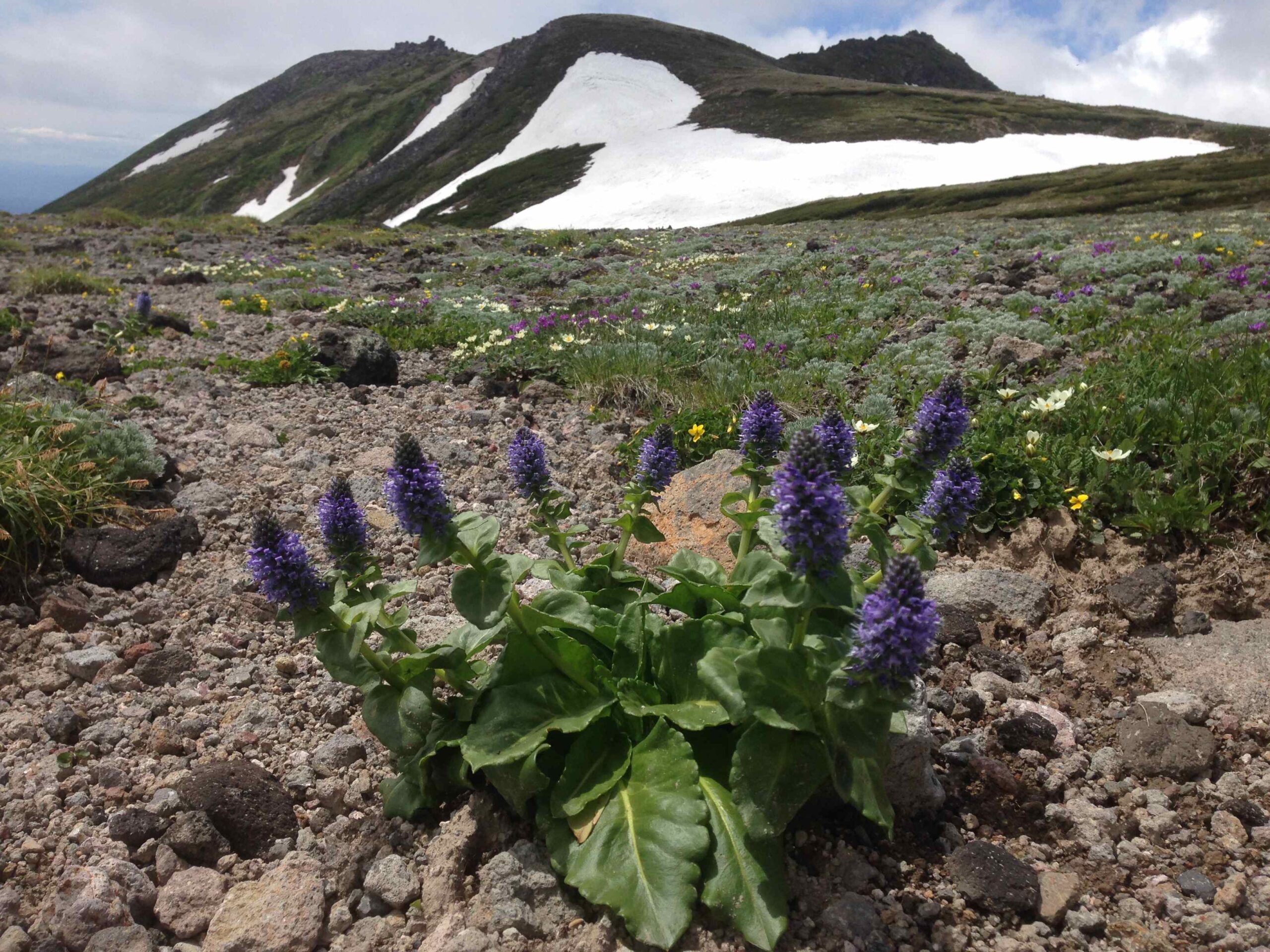There is a steep climb from the Goshiki watering place. The climb up the narrow and slippery trail gouged out of a ditch arrives at a snowfield of about 90 meters. The lower section of about 15 meters is fairly steep, and thus care is required when going up and down. Cutting out steps and use of crampons may be necessary depending on the condition of the snow’s surface.
After this snowfield comes a continuing string of snowfields measuring 130, 220, 80, 80, 50, and 200 meters. Because traversing them will require checking position on topographic maps and a GPS device and setting direction with a compass, those who lack confidence in their climbing skills should refrain from climbing here for the time being.
Photos: A snowfield in the upper area of the Goshiki watering place (left) and snowfield in the lower area of Goshikigahara (right) Jul. 2
After this snowfield comes a continuing string of snowfields measuring 130, 220, 80, 80, 50, and 200 meters. Because traversing them will require checking position on topographic maps and a GPS device and setting direction with a compass, those who lack confidence in their climbing skills should refrain from climbing here for the time being.
Photos: A snowfield in the upper area of the Goshiki watering place (left) and snowfield in the lower area of Goshikigahara (right) Jul. 2
